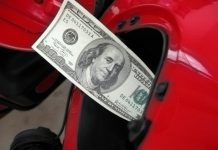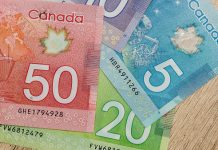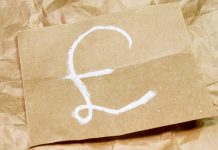Key Economic Releases and Events
The week ended on a more anxious note after all the optimism a week earlier, when investors were lauding the decelerating new coronavirus cases. There’s still optimism that the corner has been turned but now it’s the corporate side that’s spooking investors.
This week, Apple and others were quick to warn about the economic consequences of the last month, although few details were given at the time. More will likely follow in the coming weeks which may continue to spoil the party for investors, all-too-used to records at this point.
It’s election year in the US and while we’re all already looking to November, we first have to find out who US President Trump is going to be facing first. On Tuesday, the candidates will go head-to-head once again and Mike Bloomberg will be hoping to come away with a few more plaudits this time.
Country
UK
The UK political scene was quiet this week, with MPs on recess, giving the rest of us a break. They all return next week, as Labour leadership hopefuls take to the stage to convince the rest of us they can’t do any worse than Corbyn.
Data this week brought some reprieve for the Bank of England, as inflation bounced back more impressively than expected. Traders weren’t too deterred though and continue to price in a 60% chance of a rate cut this year, which seems a little hopeful and pointless to me.
US
Michael Bloomberg arrived fashionably late to the party this week and his entrance was, reportedly, far from extraordinary. Other candidates rounded on him and his billions, most notably Bernie Sanders who is looking like a strong contender at this stage. Bloomberg has plenty left in the bank though and his first appearance may not have been one to remember but you don’t become a billionaire and New York Mayor by accident. The Democratic Party may be the biggest thing standing between him and the White House.
China
The hot topic is still CoVid-19 and its impact for Asia and the global economy as a whole. We’ve now been through two iterations of the methodology for reporting the number of cases which now, on the face of it, appear to be slowing, even though a bit of scepticism is creeping in among observers. We are waiting for WHO comments on the latest change.
Meantime Asia is responding with economic stimulus measures and rate cuts. China dropped its Loan Prime Rate on Thursday on the back of earlier cuts to its medium-term lending facility (MLF). China and Singapore have laid out stimulus measures to mitigate the economic impact of the virus. Anecdotal evidence out of China shows small private companies cutting wages, delaying salary payments or even not paying staff at all. We can expect more of these kind of reports in coming weeks.
Data takes a backseat under these circumstances but for the record next week we have retail sales data and industrial production for January with the PMIs for February on the last day of the month, Saturday.
A reversal in the slowdown of the number of new cases would take the edge off risk appetite, capping the current equity rally, at least temporarily, and forcing flows into the usual safe havens of gold, the yen, Swiss franc, the US dollar and US Treasuries. It would again be negative for oil and industrial metals.
Hong Kong
Hurt by the protests and now CoVid-19, the Hong Kong economy is falling apart, with tourist arrival collapsing and hotels with only 25% occupancy. We see Q4 GDP numbers next Wednesday, and they are unlikely to be good. The economy is already in technical recession and facing the prospect of a third quarterly contraction in a row. There haven’t been any announcements of fiscal stimulus measures yet.
The Hong Kong 33 index is holding up well, as is the local dollar, despite the coronavirus effect and a firmer US dollar. Weak GDP data are likely to pressure local equities and could pull USD/HKD back up to the middle of its trading band.
Australia
Thursday’s employment report for January showed an uptick in unemployment but strong jobs creation. Given the RBA’s focus on unemployment, the higher rate saw Australian yields lower and the Aussie under pressure.
The focus now is on a dovish RBA, which could turn at any moment, and whilst this in place will continue to pressure the Aussie.
Japan
Q4 GDP data came in worse than expected, showing the first quarterly contraction in a year, which was blamed on the CoVid-19 threat. The economic toll is mounting, not to mention the bad news from the cruise ship quarantined off Japan. Data next week includes industrial production, retail trade and unemployment.
With no end to the CoVid-19 situation in sight, Japan markets could trade negatively with the yen in demand if we see another spike in cases.
Singapore
Singapore’s close links with China have brought the city state to the forefront of coronavirus news, and this week’s budget introduced measures to mitigate the economic impact. The wider budget deficit is not an issue for its AAA rating, said Fitch.
The MAS has already said there is room within the NEER trading band to ease policy and we may see an inter-meeting adjustment given the next policy meeting is not scheduled until April. The Singapore dollar weakened to the lowest level since May 2017 versus the US dollar this week. An early policy easing amid rising virus cases would pressure the SGD further.
Market
USD
The US dollar index came within touching distance of 100 on Thursday, spurred on in recent weeks by everything from safe haven flows to the outperformance of the US. Whatever is happening, dollar is king. It’s fallen just short of that psychological barrier though at the first time of asking but still finds itself at a near-three year high.
Oil
It’s been another good week for oil prices but the rally quickly ran out of gas after the inventory data on Thursday. The report gave Brent one final kick higher before the profit taking kicked in at $60 and since then its been in paring mode. The more downbeat end to the week isn’t helping, with crude slipping more than 1% on Friday. Oil prices have been heavily punished throughout the outbreak though so if we really are in containment mode, traders may become more interested in the dips once again.
Gold
Gold is heading for its best week since August as it capitalized on growing insecurity in the stock market to charge through its $1,600 resistance and burst higher. The yellow metal is now testing $1,650 and packing a punch. With investors growing ever more fearful about the corporate fallout of the coronavirus, the path of least resistance for gold looks upwards. It’s been quite a strong week though so a little profit taking in the near-term wouldn’t be outrageous, with $1,650 possibly offering a logical zone for this.
Bitcoin
I’m not sure bitcoin enthusiasts even know if it’s a safe haven at this point but regardless, it’s hovering around $10,000 and as long it in, around or being linked to the news in any way, it seems capable of finding a reason to rally. It’s consolidated over the last couple of weeks but there’s no major signs of weakness there at the moment. The halving in May could keep prices elevated in the coming months.













